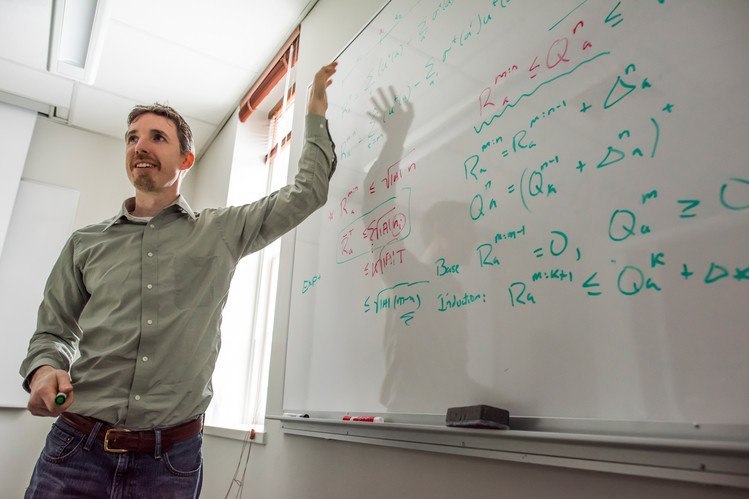
Cepheus Computer Program Claims Unbeatable Heads Up Limit Texas Hold’em Skills

University of Alberta Professor Michael Bowling, whose team created Cepheus. Bowling claims that the bot has cracked heads-up limit poker. (Image: John Ulan/University of Alberta)
Meet Cepheus, the computer program that its creators believe has “solved” heads-up fixed-limit poker.
Cepheus uses a new algorithm called CFT which, according to its creators at the University of Alberta in Canada, is able solve extensive-form games orders of a magnitude greater than previously possible.
This algorithm, they claim, has created a game theoretical strategy so close to optimal that “it can’t be beaten with statistical significance within a lifetime of human poker playing.”
The program has “taught” itself to play almost perfectly by playing literally trillions of hands against itself and learning to “regret” and remember each decision that did not result in the optimal outcome, rendering it unexploitable by humankind. You can even test it for yourself, at poker.srv.ualberta.ca, although be warned: the website is currently experiencing very heavy traffic.
“Our model has spent two months playing poker again and again,” said lead researcher Michael Bowling. “It’s playing 24 trillion hands of poker every second for two months. That’s more poker hands than all of humanity, so in some sense it’s not surprising that it has developed the perfect strategy.”
Long Time Coming
The Computer Science Department of the University of Alberta has long been engaged in research to create artificial intelligence capable of playing optimal poker.
However, because poker, unlike, say, chess, is a game of imperfect information, game theory algorithms developed by computer scientists can never quite be truly perfect; instead they must approximate a “perfect” poker strategy, which is defined as a strategy that cannot be exploited by any other counter-strategy.
The department’s first attempt was “Loki,” back in 1997, followed two years later by “Poki,” which later provided the AI on Daniel Negreanu’s poker video game, Stacked. In 2005, Phil Laak played against a later incarnation, Vexbot, during the WSOP, winning narrowly, while admitting that luck had played a part in his victory.
Laak was to repeat the exhibition two years later, along with Eli Elezra, playing against Vexbot’s successor, Polaris. After 64 hours of play, Polaris tied the first round, won the second, and lost the last two. However, today, the team at the University of Alberta is confident it has finally cracked the game.
The New Deep Blue
It remains to be seen whether high-stakes fixed-limit heads-up specialists are currently quaking in their boots, or looking for alternative employment, although it does present the tantalizing possibility of a Kasparov versus Deep Blue style match.
Deep Blue was a famous chess-playing computer, developed by IBM, that tangled with world champion Garry Kasparov in the nineties.
In 1997 Deep Blue beat Kasparov over six games, by two games to one with three draws. Kasparov accused IBM of cheating, and suspected that human chess players had been involved in some of the moves contributed to the computer. He requested a rematch, which IBM refused.
Someone needs to put this AI upstart in its place. Phil Ivey, the human race needs you, NOW!















0 Comments